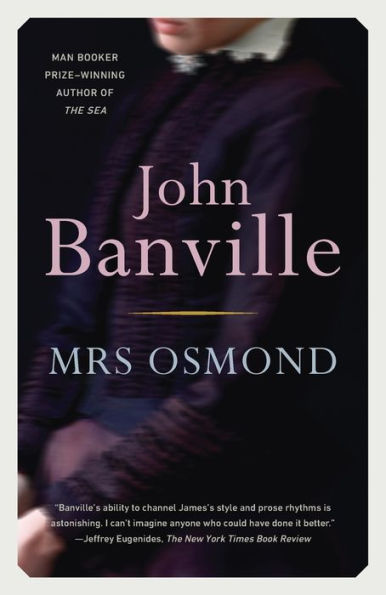Reading Group Guide
The questions, discussion topics, and reading list that follow are intended to enhance your reading group’s discussion of Mrs. Osmond, the sequel to Henry James’s The Portrait of a Lady by Man Booker Prize–winner John Banville.
1. Have you read The Portrait of a Lady? How does this sequel compare to your interpretation of James’s ambiguous ending?
2. Banville chose as his epigraph an excerpt from James’s novel: “Deep in her soul—deeper than any appetite for renunciation—was the sense that life would be her business for a long time to come.” What does this sentence mean? Why did Banville choose this particular passage?
3. Our first glimpse of Isabel’s character comes through her maid, Staines, on page 4, who feels vexed by “what she considered her mistress’s willful credulousness, deplorable gullibility and incurably soft heart.” Does this strike you as an accurate assessment? How does Isabel change over the course of the novel?
4. At several points, Isabel considers her fortune to be a burden. Why? How might her life be different if she hadn’t come into this inheritance?
5. Certain scenes have comedic undertones. How does Banville use humor to advance the story?
6. Why does Isabel attempt to make her relationship with Staines more egalitarian?
7. The behavior of several characters seems to be influenced by their location—in Rome vs. Florence, for instance. Why does it matter where conversations and confrontations take place?
8. On page 252, Isabel’s aunt tells her, “Advice is another term for mischief-making, and anyone who asks for it deserves the consequences. One cannot be told how to live, my girl—and one shouldn’t wish to be.” How does this advice against advice prove useful to Isabel?
9. A vein of feminism runs throughout the story. How does it compare to your understanding of the time period, and to The Portrait of a Lady?
10. Why does Serena Merle accept Isabel’s proposition?
11. We don’t learn the whereabouts of the satchel of cash until relatively late in the novel. Why does Banville withhold this information?
12. How does Isabel’s final disposition of the money demonstrate how she has grown?
13. As the novel progresses, Isabel finds herself able to hold her own against both Gilbert Osmond and Serena Merle. What is the source of this newfound strength?
14. Discuss Isabel’s final encounter with Countess Gemini and Pansy. Why does Pansy act so cool toward Isabel? How did you respond to the Countess’s insinuations about Pansy?
15. The idea of freedom is a major theme of the novel. At what point does Isabel become free? How does she achieve freedom?
16. In the final scene, Isabel takes Myles Devenish to Paddington Station. Why? His response disappoints Isabel: “Our task, it seems to me, is to look beyond the individual case, and aim to make a world that will not any longer allow of the wretchedness you witnessed in that poor man’s plight” (page 369). Why does this change her attitude toward him?
17. Banville ends the novel as enigmatically, as James did with The Portrait of a Lady: “He had meant his words, shy and tentative as they had been, to convey an explorative note, a note of invitation, even, which he hoped Isabel would meet, and answer; but Isabel said nothing, nothing at all” (page 369). How do you interpret this



